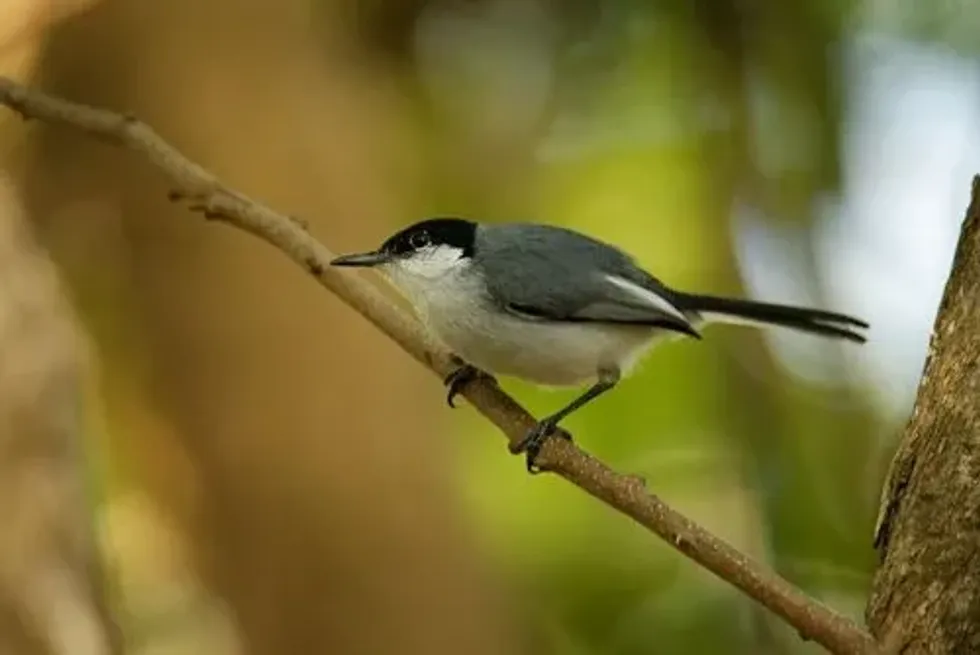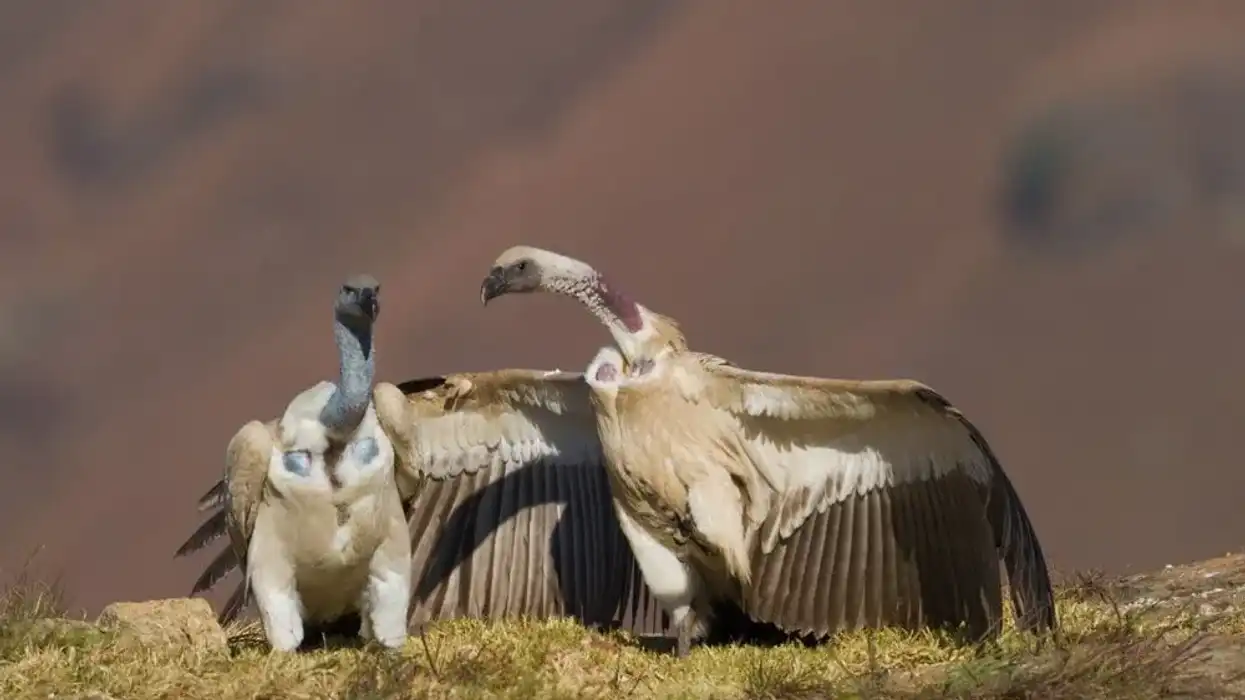An adorable bird, the black-capped gnatcatcher (Polioptila nigriceps) is a songbird found in North American countries such as the United States and Mexico. A huge population of black-capped gnatcatchers has been found in southeastern Arizona, a state in the United States.
The bird resembles the black-tailed gnatcatcher and California gnatcatcher. The black-capped gnatcatchers have blue-gray-colored, and white-colored upperparts and underparts respectively.
They are around 0.011 lb (5 g) in weight and 3.5-4.3 in (9-11 cm) in length. Unlike other birds of North America, the black-capped gnatcatchers are non-migratory. Both the male and female black-capped gnatcatcher help each other in the process of nesting and incubation.
Female black-capped gnatcatcher lays around four eggs. By looking at the satisfying numbers of birds, the International Union for Conservation of Nature has listed the bird in the Least Concern category.
Keep on reading to learn more interesting facts about the Black-capped Gnatcatcher. If you want to know more exciting information about different animals, check out least tern and whiskered treeswift.
Black-Capped Gnatcatcher Interesting Facts
What type of animal is a black-capped gnatcatcher?
The Black-capped gnatcatcher (Polioptila nigriceps) are small-sized songbirds. They primarily prey on wild fruits and small insects. The birds are primarily found in pine-oak woodlands.
What class of animal does the black-capped gnatcatcher belong to?
The black-capped birds belong to the class of Aves, Polioptilidae family, and genus Polioptila.
How many black-capped gnatcatchers are there in the world?
According to a study, there are more than 200000 black-capped gnatcatchers. The black-capped gnatcatchers are primarily found in the United States and Mexico. Also, by looking at the population of the birds, the International Union for Conservation of Nature has listed the bird in the Least Concern Category.
Where does black-capped gnatcatcher live?
The birds are native to North American countries such as Mexico and the United States, especially in southeastern Arizona.
What is a black-capped gnatcatcher's habitat?
The gnatcatchers are majorly found in riparian woodlands and pine-oak woodlands.
Who do black-capped gnatcatchers live with?
Just like the black-tailed gnatcatcher, the black-capped birds are not solitary but live in pairs. These birds remain in their nests to protect their territory. Some also even live alone.
How long does black-capped gnatcatcher live?
The lifespan of the black-capped gnatcatcher is not known as of now.
How do they reproduce?
The breeding of the black-capped gnatcatcher birds is the same just like the black-tailed gnatcatcher. The breeding season is not known but the black-capped gnatcatcher birds are monogamous which means the birds mate with only one partner at a time.
The birds lay around four eggs at a time and an interesting fact about the birds is both male and female partners are involved in the nesting and incubation. The incubation period lasts for not more than 14-15 days.
What is their conservation status?
The gnatcatchers are quite common in the United States and Mexico and the International Union for Conservation of Nature has also listed the species in the Least Concern category.
Black-Capped Gnatcatcher Fun Facts
What do black-capped gnatcatchers look like?
A beautiful songbird that resembles the black-tailed birds, belongs to the family of Passeriformes, the black-capped gnatcatchers are best known for the black cap. The upper and underparts are blue-gray and white. The birds are also known for their beautiful call notes and feathers. The birds are predominantly found in Mexico and the United States.
How cute are they?
The black-capped gnatcatchers are one of the most cutest and adorable birds found in North America. As the name suggests, the bird has a black-colored head, and the upper body and lower body are blue-gray and white-colored respectively.
Also, both male and female birds have white-colored tails and beautiful feathers. These birds are a major attraction for tourists in the United States and Mexico. These birds strongly resemble other gnatcatcher birds such as the black-tailed gnatcatcher and California gnatcatcher.
How do they communicate?
Like other birds, the black-capped gnatcatchers follow the same methods of communication. They primarily use songs, call notes, and body language to communicate with each other. During the breeding season, males and females attract each other through courtship behavior.
How big is black-capped gnatcatcher?
The black-capped gnatcatcher is quite small in size and the average weight is around 0.01 lb (5 g) while they are 3.5-4.3 in (9-11 cm) long. Some of these are even bigger than rare California gnatcatchers. The black-capped gnatcatchers are twice thrice the weight of bee hummingbirds.
How fast can black-capped gnatcatcher fly?
The exact speed of the black-capped gnatcatcher has not been recorded yet. As the birds are small, the speed is often determined by the winds but they are quite active during the summer season and you can spot them flying quite easily.
How much does black-capped gnatcatcher weigh?
The birds are small and the average weight of a black-capped gnatcatcher bird is 0.011 lb (5 g).
What are the male and female names of the species?
There are no specific names given to the male and female black gnatcatchers. People generally differentiate the birds by the cap. The male bird has a dark black cap.
What would you call a baby black-capped gnatcatcher?
No particular name is been used to describe the babies of the blue-gray gnatcatcher. People generally use chick or young to refer to the babies of the birds.
What do they eat?
These birds primarily prey on small insects but some also eat wild fruits.
Are they dangerous?
The beautiful blue-gray gnatcatcher birds are not dangerous or vicious, they love being around themselves. They could turn aggressive if someone comes closer to the nests or tries to provoke the bird.
Would they make a good pet?
Just like the black-tailed gnatcatcher bird, the blue-gray gnatcatcher is so attractive and an adorable bird. The bird has a black cap on its head, a white under-tail, and a pink base which makes them more fascinating.
But it would be quite difficult for them to survive in a cage as they love woodlands. Also, their eating habits are different as most of them primarily prey on insects.
These birds can easily be spotted in Southwestern Mexico, and Arizona during the summers. They are also quite energetic, so it would not be that easy to pet them.
Did you know...
From western Mexico to southeastern Arizona in the United States, the range of the bird is more than 64,479 sq mi (167,000 sq km).
The bird use techniques such as gleaning and hawking while catching their prey.
How many eggs do black-capped gnatcatchers lay?
The female black-capped gnatcatcher lays around four eggs at a time.
Is the black-capped gnatcatcher a songbird?
The black-capped gnatcatcher is a songbird that belongs to the family of Passeriformes. The birds also use different call notes and songs to communicate with each other. Song repertoire is often used by the birds as a major courtship behavior. Many tourists from different countries come to see these birds.
Here at Kidadl, we have carefully created lots of interesting family-friendly animal facts for everyone to discover! Learn more about some other birds including European starling or monk parakeet.
You can even occupy yourself at home by drawing one on our Black-tailed Gnatcatcher coloring pages.









